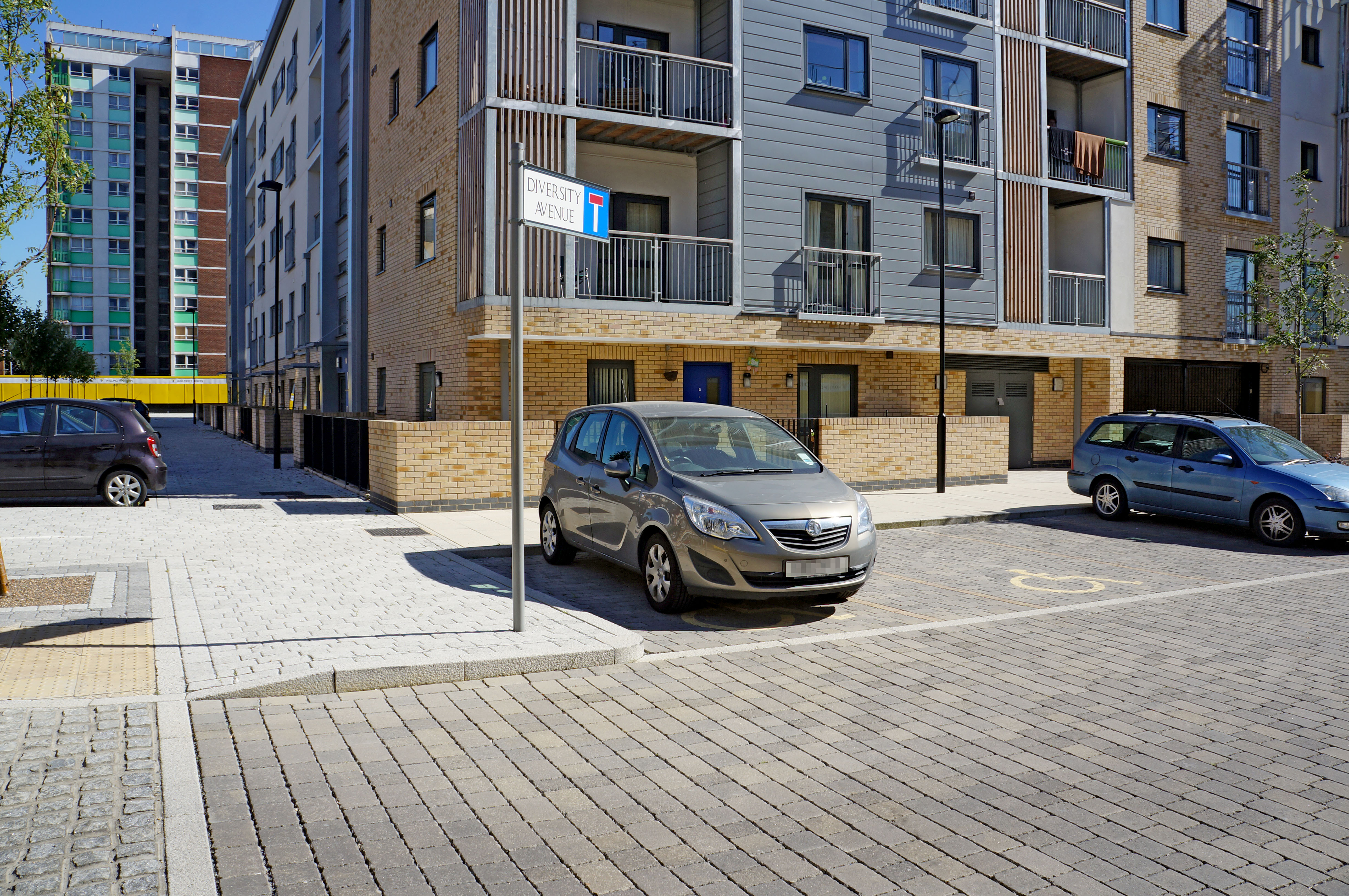Transformative Paving

A new case study is available exploring the transformative power of inspired hard landscape design. Covering a 6-year period, it revisits the phased regeneration of Orchard Village - previously known as the Mardyke Estate - in east London, master-planned and designed by PRP.
The case study features application of a restrained palette of precast concrete hard landscape products as part of a master-plan. It includes extensive use of permeable paving for SuDS on a sensitive site bounding a multi-award-winning wetland park – home to a variety of wildlife. It also demonstrates the longer-term robust performance of precast concrete paving.
Mardyke Estate was a typical 1960s social housing estate which experienced major deprivation. Nearly 1,000 people lived in 509 dwellings, generally in 12-storey tower blocks or 3 to 5-storey smaller blocks, and the estate was ranked within the 20 most deprived wards in England. Comprehensive consultation proved critical in developing a master-plan for the area, with the residents having a key role in the regeneration process.
Key to the overall design is a clear and legible hierarchy of roads, streets, paths and cycle-ways permeating throughout the site. This includes a main vehicular and bus route, secondary roads and shared surfaces. Paving materials, street furniture and planting vary with each different road type. The provision of tactile surfacing, dropped kerbs and smooth, even, well-drained paving throughout the estate – to encourage inclusivity for all – was particularly important.
A simple palette of hard landscape materials defines the road hierarchy and creates a language that unifies the whole site. Simple and ‘clean’ materials predominate, so that an open feel to the site is maintained. The precast concrete block paving was carefully selected to complement the buildings, with a silver-grey granite finish. Concrete kerb units are also used extensively – both raised and flush with the paving – as well as concrete flag paving, granite setts and buff bound gravel.
The Beam River runs along the western boundary of the site, bounding a multi-award-winning wetland park, Beam Parklands – home to a variety of wildlife including Great Crested Newts. As part of a general approach towards improving ecology and biodiversity – bearing in mind the site’s sensitive location – water management using SuDS techniques was considered important and extensive areas of concrete block permeable paving are included throughout.
A substantial amount of the precast concrete paving was installed early in the project, although also serving more recent phases, and has now been in use for over 6 years. Interpave has regularly visited and photographed the project, most recently in June 2018, and observed the longer-term robust performance of the paving over time - as highlighted in the new case study.
The case study is available here. More images can be seen here.
